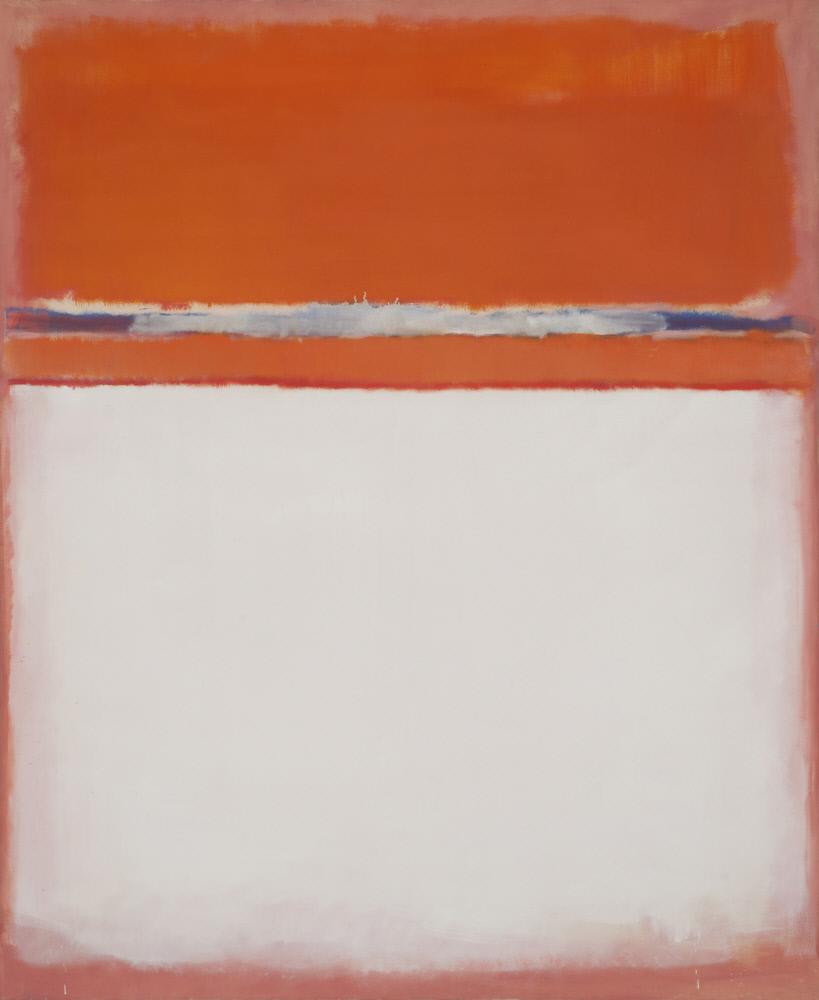Pollock and Rothko: a Meditation
By Sam Guindon ’21


The first painting one sees upon entering the Munson William Proctor institute’s front entrance is an expansive, explosive piece by Jackson Pollock. The canvas is extremely wide and of a soft, cloth material. The painting is hung on a white wall under the staircase, and sports a small gold frame. It is separated from its audience by a small rope barrier. The painting features an assortment of splatters, including softer red and yellow spots over the dark background, with a violently sprayed layer of white paint applied over top in thick ropes. The white layer is by far the most dynamic part of the painting, and the busy, highly contrasted figures seem to dance over top of the canvas. This painting is remarkable in its sense of movement. When Hans Namuth visited Pollock’s studio, he recounted that “His movements, slow at first, gradually became faster and more dancelike as he flung black, white and rust-colored paint onto the canvas.” This painting reflects Namuth’s description uncannily. The unusual width of the fabric emphasizes this, bringing to mind a giant rotoscope of dancing, paint flinging figures. However, this dynamic painting is not foreboding or threatening in its activities. It feels more distant, lost in its own world. The lack of a clear focal point in the painting furthers this feeling of self-involvement, as the viewer’s eye is not being led at all by the work, but instead left to roam at will. This is emphasized by the placement of the painting, across a huge room from the doorway, and in its own space under the staircase, framed by gold like a window into a forest ritual. The barrier around it serves to protect the painting from the visitors, but also to allow the painting to be undisturbed in its quiet activity. Again, this is reflected in the work of Pollock, as Hans Namuth remarked on his second visit to Pollock’s studio how emotionally draining Pollock found it to be observed at work, prompting a long drunken decline in the artist. This distance that the painting exhibits is best juxtaposed against Mark Rothko’s work.
Rothko’s painting shares only a few similarities with Pollock’s. Its impressive scale matches Pollock’s, as well as the small barrier placed around it. They are both hung on white walls, and both made from soft looking canvasses. Rothko’s painting, however, uses much warmer colors, features no sharp edges, and lacks the chaotic mania of the latter. The top third of the canvas is covered by a soft orange swath of paint, with a thin band of gray-blue underneath. Below the band is a large rectangle of soft white that covers more than half of the painting. While the scale is similarly impressive like the Pollock piece, the Rothko painting feels like more of an embrace. The blended edges of the large white rectangle simulate basking in front of a giant lamp, reminiscent of a tissue paper lantern with light shining through it. The entire canvas feels comfortable, well-worn, and not overly concerned with its presentation due to the imperfect paint strokes and friendly faded colors. In contrast to the Jackson Pollock piece, this painting feels very present with its audience. This is due to the intimacy of the upstairs space, which gives the Rothko a much smaller area to entertain its guests then the Pollock, but also due to its sense of stillness. The geometry of the painting feels complete, unwavering, and meditative when compared to the Pollock’s frantic activity. Also, the lamp-like rectangle which acts as a focal point is at eye level and allows the viewer to feel more at ease with this gentle giant of a painting as they don’t need to gaze up at it.The contrast between the two pieces is fascinating. The juxtaposed sense of presence and distance that the two display complement each other perfectly.